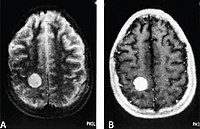
Photo from wikipedia
Cutaneous angiosarcoma is a rare neoplasm. One important predictor of recurrence is the resection margin; however, identifying the tissue area containing the malignant cells is difficult. Indocyanine green fluorescence angiography… Click to show full abstract
Cutaneous angiosarcoma is a rare neoplasm. One important predictor of recurrence is the resection margin; however, identifying the tissue area containing the malignant cells is difficult. Indocyanine green fluorescence angiography (ICG-FA) has been used to identify superficial malignancies, including malignant tumors in the liver and sentinel lymph node metastasis of breast cancer. ICG-FA is also used to identify and define the resection margin of cutaneous angiosarcomas. However, there are currently only a few reports on the application of ICG-FA for detecting cutaneous angiosarcomas. We experienced a case of cutaneous angiosarcoma in the scalp in which one lesion, located in the parietal scalp, and showed high fluorescence intensity corresponding exactly with the lesion defined by physical examination, whereas the malignant area of the second lesion, located in the occipital scalp, was revealed more accurately by ICG-FA than by physical examination. Further, the second lesion was the first case diagnosed as angiosarcoma by the limited-area biopsy for a high-intensity area of ICG-FA. By determining where ICG is located within cutaneous angiosarcomas and quantitating the ICG intensity level corresponding to the malignant area, ICG-FA will be a promising tool for identifying cutaneous angiosarcomas.
Journal Title: Photodiagnosis and photodynamic therapy
Year Published: 2020
Link to full text (if available)
Share on Social Media: Sign Up to like & get
recommendations!